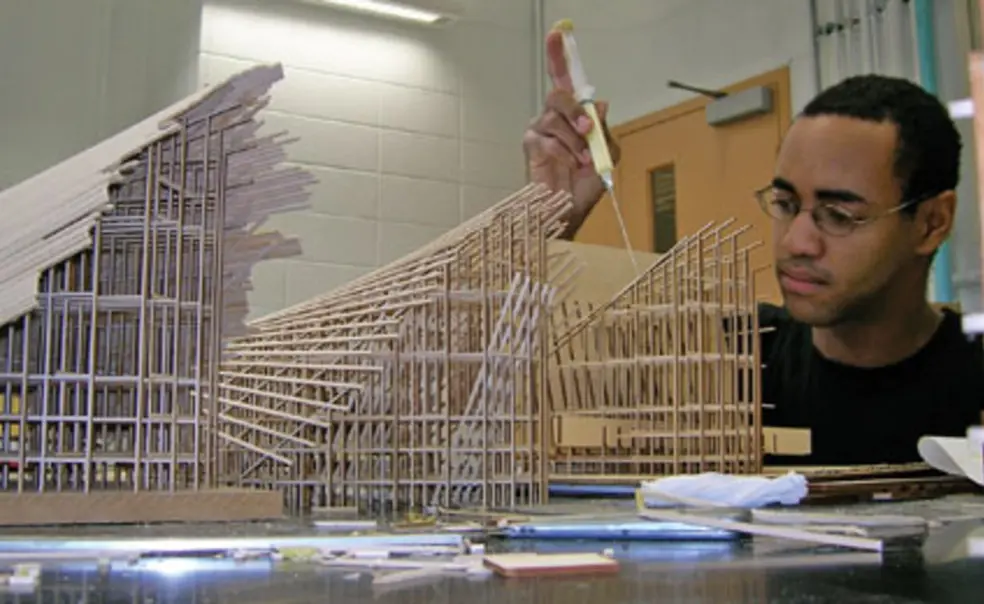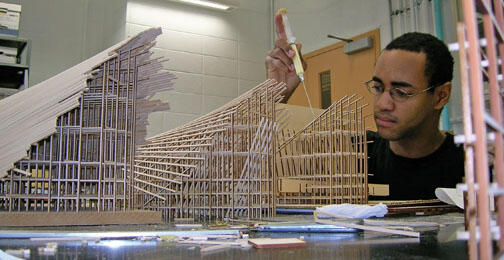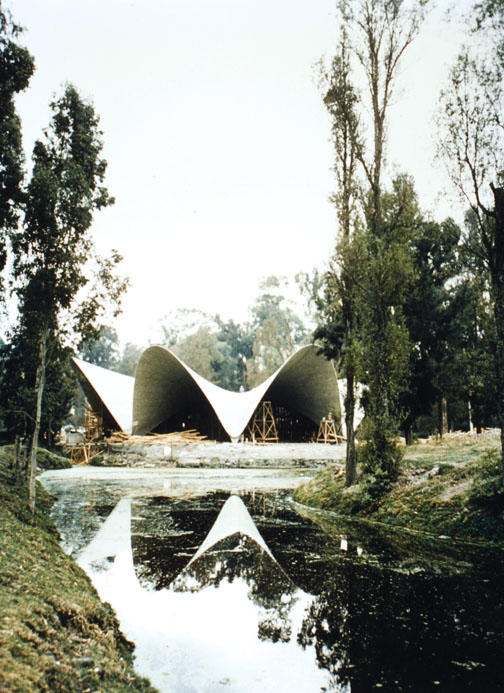Ethereal designs that blend art and engineering
An exhibition at the Princeton University Art Museum, “Félix Candela: Engineer, Builder, Structural Artist,” not only contains photographs of the work of one of the 20th century’s most innovative architects, it also displays the talents of seven Princeton undergraduates and graduate students.
It is a collaboration between the art museum and the Department of Civil and Environmental Engineering, which is fitting because Candela (1910–1997) himself blended art and engineering in distinctive ways. Trained as an architect in Spain before fleeing to Mexico after the Spanish Civil War, he opened his own construction firm and taught himself mathematics and engineering. This knowledge enabled him to create his signature thin-shell structures, whimsical buildings that seemed to float in the air and could resemble anything from an upside-down umbrella to a ship’s sail.
The exhibition, which runs through Feb. 22, has its roots in a course, “Structure in the Urban Environment,” that was taught jointly by David Billington ’50, the Gordon Y.S. Wu Professor of Engineering, and Maria Garlock, an assistant professor of civil and environmental engineering. Working over three summers, Billington and Garlock led undergraduates and graduate students who constructed intricate scale models of several of Candela’s most significant structures. Some of these models were designed on a 3-D printer at the Port Authority of New York and New Jersey that translated computer drawings into physical structures, using layers of plaster powder and adhesive. Other students built their models out of wood, using techniques similar to those Candela employed in his own work, albeit on a miniature scale.















No responses yet